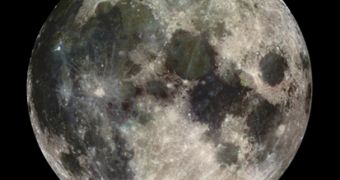Thanks to data provided by NASA's Moon Mineralogy Mapper (M3, for short), researchers have been able to pin down traces of magmatic water on the Moon's surface, in and around the Bullialdus crater.
By the looks of it, this is the first time when remote detection technologies have been used to identify and locate traces of said type of lunar water from orbit.
In a paper published in the journal Nature Geoscience this past August 25, researchers explain that this magmatic water stems from deep inside our planet's satellite.
It resides within the lunar crust and mantle, they further detail.
In order to locate trace amounts of magmatic water in and around the Bullialdus crater, researchers analyzed data collected when the M3 was made to image the entire area.
This information helped the researchers determine that the rocks in the crater's central peak are so-called norites.
“The rocks in the central peak of the crater are of a type called norite that usually crystallizes when magma ascends but gets trapped underground instead of erupting at the surface as lava,” scientist Rachel Klima at the Johns Hopkins University Applied Physics Laboratory explains.
“Bullialdus crater is not the only location where this rock type is found, but the exposure of these rocks combined with a generally low regional water abundance enabled us to quantify the amount of internal water in these rocks,” she adds.
Besides, they found that the crater contains loads of hydroxil, which is basically a molecule made up of one hydrogen and one oxygen atom.
“The hydroxyl absorption features were consistent with hydroxyl bound to magmatic minerals that were excavated from depth by the impact that formed Bullialdus crater,” Rachel Klima says.
Interestingly enough, several samples of lunar rocks that have been collected over the years were found to contain trace amounts of water.
However, scientists simply assumed – and went on assuming for quite a long while – that the samples had been contaminated, and that the water detected in them came from Earth.
“For many years, researchers believed that the rocks from the Moon were 'bone dry,' and that any water detected in the Apollo samples had to be contamination from Earth,” scientist Rachel Klima at the Johns Hopkins University Applied Physics Laboratory explains.
“About five years ago, new laboratory techniques used to investigate lunar samples revealed that the interior of the Moon is not as dry as we previously thought. Around the same time, data from orbital spacecraft detected water on the lunar surface, which is thought to be a thin layer formed from solar wind hitting the lunar surface,” Rachel Klima goes on to say.

 14 DAY TRIAL //
14 DAY TRIAL //